Welcome to Tijuana: No Man’s Land
We talked with the French director Jean-Charles Hue during the XVI Seville Film Festival about Tijuana Bible, his audiovisual miracle
To keep a long-distance relationship for more than a decade is not easy. The worst is not the language, Jean-Charles Hue learned Spanish and he’s fluent – although he uses Mexican expressions and has a strong French accent – the problem is getting used to the absence because none of us is prepared to be separated for a long time from who makes us vibrate. The wait, despair and the illusion for the reunions is fading until disappearing like the mist of the crystals when it dawns in winter.
This is the story of a Frenchman in love with Tijuana, a surreal but authentic city that is halfway between good and evil. He can only go there a couple of months a year, not as much as he would like to but it’s the perfect dose, otherwise, he would not enjoy it so much or continue to miss it when he goes back home.
Jean-Charles Hue (Eaubonne, 1968) has always been fascinated by the border, he is attracted to the idea of that “no place” in which everything can happen. He spent his childhood on the outskirts of Paris, where he claims to have learned to see things with perspective and some distance, to wander between the emptiness of belonging to something and the non-identification.
He grew up watching the 70’s Hollywood movies and in his retina, they left their mark on audiovisual creations as diverse as the Westerns The Getaway (1972) and Bring me the head of Alfredo García ( 1974) by Sam Peckinpah or Scorsese’s cult film Taxi Driver (1976).
In his universe, the personal conflicts of antiheroes develop in bleak places. His characters wander aimlessly around the world looking for the meaning of their existence and they find it through introspection, after interacting with other lost spirits whose, like them, converge and repel each other, escape and manage to get out of that situation when they see a ray of light and hope in the underworld. «Tragic, but visually beautiful,» as his fellow countryman Jean-Claude Rozec would say.
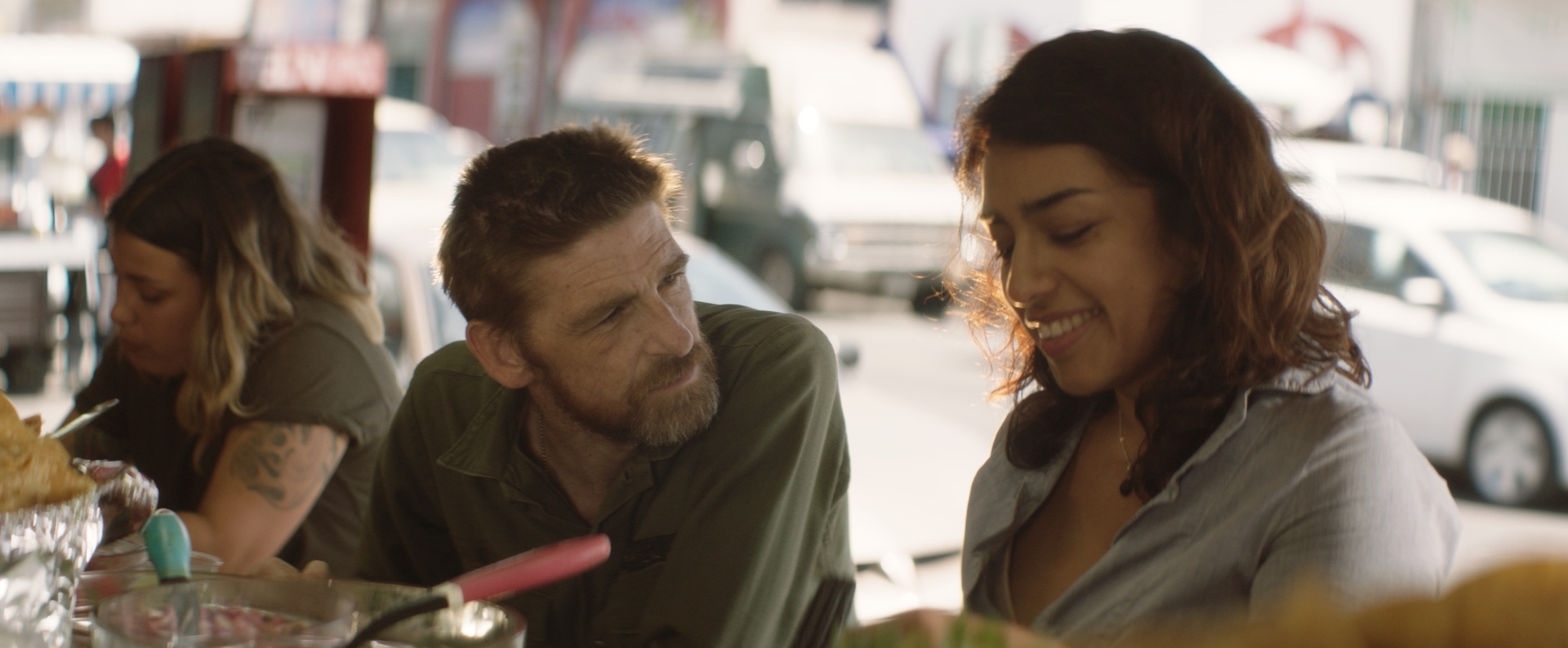
Paul Anderson and Adriana Paz, the protagonists of Tijuana Bible / Avalon
Tijuana Bible is more addictive than heroin and is very intense, like life itself. Hue describes it as «the first novel of a writer», although his work is more like an extensive audiovisual poem with a beat touch that could have been created by one of the poètes maudits on one of those nights of tequila, sexo y marihuana.
Paul Anderson, known for giving life to Arthur Shelby in the Peaky Blinders, plays Nick, an American war veteran who has lost faith in everything and flees to Tijuana seeking evasion but ends up being absorbed by the frantic pace of the border of the illusions. His only escape route is “la pinche drug”, with each shot and puff he rises to the stratosphere where he connects with the universe, forget all his problems for a moment and feels alive.
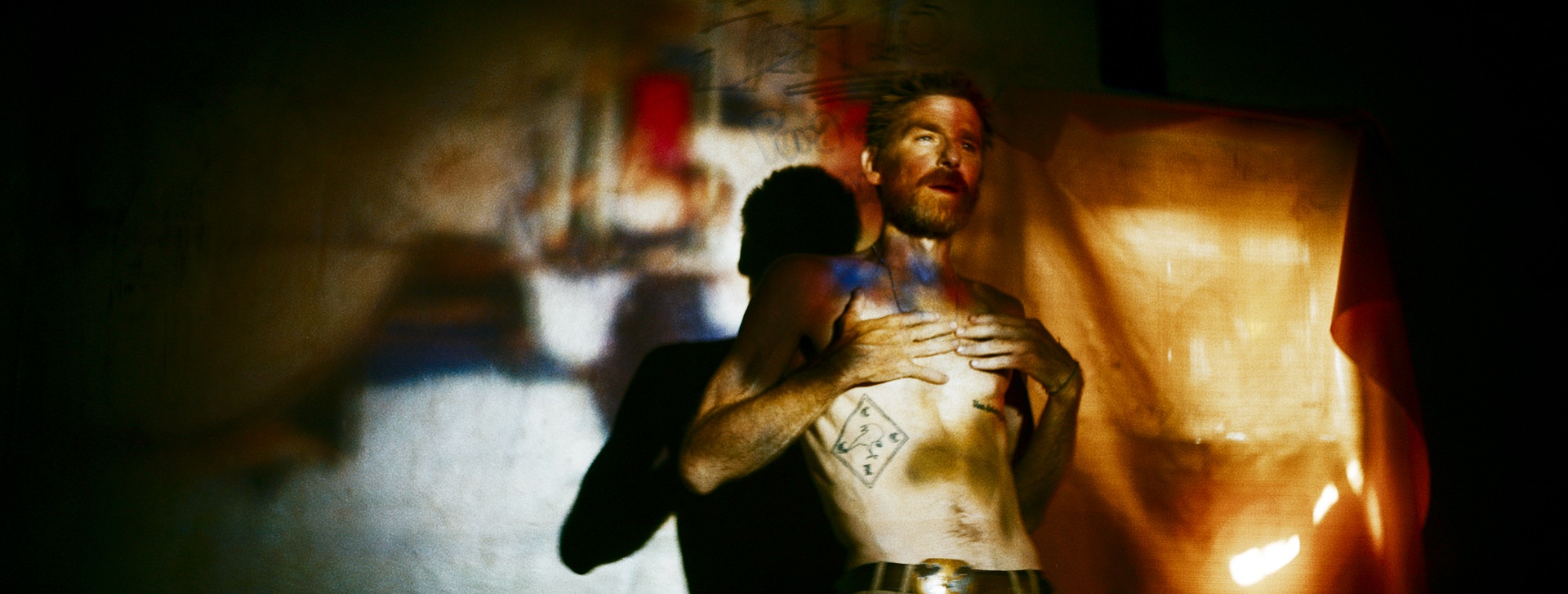
War veteran Nick (Paul Anderson) in his room / Avalon
This long toxic relationship has turned him into a self-destructive being that is gradually consumed in the room of a hotel until Ana (Adriana Paz) appears, she’s an enigmatic woman, a warrior that has arrived here looking for her brother, a Marine deported to Mexico despite having served in the United States Army.
There is an underground Tijuana that catches which web and constricts the soul of its prey. She ignores that and she didn’t care about it because she follows her intuition and not only has the energy, determination and hopes that Nick lacks, he knows that God is on her side. He will be forced to keep her away from this chaos and the drug dealer known as El Topo (Noé Hernández), he’ll try to save her to save himself. This is Tijuana Bible, Hue’s fourth feature film inspired by real people and stories with some dealers, junkies, whores, murderers and homeless people who are playing themselves for the first time.

Paul Anderson and Adriana Paz in the cemetery of Tijuana / Avalon
Since the world premiere of the film at the 24th edition of the Busan International Film Festival in South Korea and the screening at the 35th Warsaw Film Festival, the French director had not been able to enjoy it as a spectator until the first pass of Tijuana Bible at the 16th Seville European Film Festival. He confesses that he was excited to see the movie and that the reception was very good. In fact, he observed the reactions of the public at some key moments and was glad to confirm that he had managed to convey what he wanted.
This film has been a great challenge for Jean-Charles Hue for several reasons, the main one: the city. He considers that “is a miracle to have been able to record it in Tijuana” and acknowledges that the help of the Mexican director Ricardo Silva – winner of the Golden Leopard in the category of Filmmakers of the Present of the 67th Locarno Festival for Navajazo (2014) – was essential to find good locations, like the one in the cemetery, on the outskirts of Tijuana. In addition, it should be noted that he was not used to working with internationally-known actors such as Adriana Paz (Vis a Vis, El Autor, La Tirisia) and Paul Anderson (The Revenant, Legend, Passion) or with unpredictable drug addicts as extras.
He is still surprised that Paul has agreed to work with actors without professional experience and about the fact that he was not afraid or unscrupulous at the time of recording, also that he would love to go for a walk in the red light district of Tijuana followed by cinematographer Jonathan Ricquebourg and his trained team of about 15 people. By the way, some scenes of these spontaneous incursions have been included in the film.

Nick leaving his room in Tijuana / Avalon
«I believe in the good vibes of things», he confesses quietly while drinking a sip of tea. He didn’t know that the hotel where Paul was staying was a drug store, he had some problems with the narcos, when they saw him with the camera they thought he was a journalist, and also with the whores, because they refused to have their faces recorded; He witnessed the brutal beating of a policeman to a drug addict while searching for locations on the canal and he also saw some dead bodies during the filming, many of them decomposing in a pond in the mass grave of the cemetery of Tijuana, where his favourite scene of the movie takes place. And despite everything, he wants to return.
Sometimes reality surpasses fiction, especially in this cross-border area, the largest in Mexico and one of the most visited in the world. According to two studies published by the Citizen Council for Public Security and Criminal Justice in 2018, Tijuana heads the ranking of the 50 most violent cities in the world and is the second most violent municipality in Mexico with a rate of 125.14 intentional homicides for every 100 inhabitants.
Four years ago, the local government implemented eviction and cleaning operations for the Tijuana Canal, a measure that made the situation worse because it dispersed the population throughout the city; Although Hue recalls that the situation was different 10 years ago: «Thousands of people lived in the canal and tunnels,» most had been deported from the United States or Americans like Nick who had come to Tijuana to leave everything behind and start a new life; others went there to achieve the ‘American dream’ but they gave up and stayed south of the border until their last days.
Jean-Charles Hue’s idyll with Tijuana began in 2009 when he brought to the silver screen some urban legends of the city in Carne Viva, his first feature film premiered at the 27th Turin Film Festival and his link was strengthened with two other works: the short film Tijuana Tales (2017) that tells the story of a man who returns to Tijuana following the footsteps of a woman trapped in a vicious cycle of drugs and nocturnal debauchery, and the documentary Topo y Wera (2018).
Undoubtedly, Hue’s goal is to convey in his audiovisual works the reality that thousands of people live in Tijuana, no man’s land and in this last work he has achieved it again. The incredible interpretation, the magnetism of Adriana Paz and Paul Anderson, the choice of locations and the excellent photography direction of Ricquebourg have been essential to portray with credibility the complex situation of the North Zone, the canal and the border
Although he’s currently writing the script for a new project in which he reflects on the France of the 70’s and the Frédéric Dorkel’s clan (La BM du Seigneur, 2010 and Mange tes morts – Tu ne diras point, winner of the Jean Vigo Prize and of the City of Turin Award in 2014), he still thinks of Tijuana and wants to return to record a documentary film about whores, those “lost souls” on the border and their constant struggle to survive.

Tijuana Bible
Direction: Jean-Charles Hue
Screenplay: Axel Guyot, Jean-Charles Hue
Photography: Jonathan Ricquebourg
Music: Thierry Malet
Cast: Paul Anderson, Adriana Paz, Noé Hernández, Giancarlo Ruiz
Production: Philippe Braunstein, Axel Guyot
Producer: Les Films d’Avalon, Orange Studio, Ad Vitam Productions, La Torre y el Mar
- La VI edición del Interestelar Sevilla está a punto de despegar - 08/04/2022
- Hacia un estilo de vida alternativo - 31/01/2022
- La última oda francesa al carpe diem - 17/10/2020



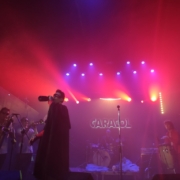

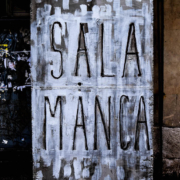
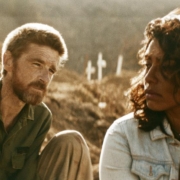



Dejar un comentario
¿Quieres unirte a la conversación?Siéntete libre de contribuir!